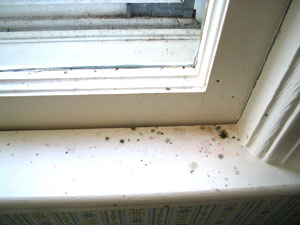 When homeowners first learn about the risks of residential mold, they’re often a little bit frustrated — especially if they’ve only recently purchased a home for the first time. Aren’t there enough details to think about already? Aren’t there enough expenses, repairs, renovation projects, and other things to worry about?
When homeowners first learn about the risks of residential mold, they’re often a little bit frustrated — especially if they’ve only recently purchased a home for the first time. Aren’t there enough details to think about already? Aren’t there enough expenses, repairs, renovation projects, and other things to worry about?
Nobody’s saying that residential mold is a desirable thing — but there’s no denying that it is a reality. Every year, countless homes and businesses across the country discover mold issues in their homes and businesses. In some cases the problem can be resolved with relative ease. In others, it requires a complex mold remediation effort that costs serious money. In either case, residential mold problems (even if they have been professionally addressed) bring reporting issues to light. For example, if you sell you’re home, you’ll probably be required to report any mold-related incidents that have taken place in the history of the home or business. This can make selling a lot more complicated, and can affect your market value in an adverse way.
One question people often ask involves the specific type of mold that’s growing in a home or business. Specifically, they want to know if some types of mold are dangerous and others not. Depending on what type of mold is actually discovered in a property, is it possible to avoid professional cleanup efforts and simply “let sleeping dogs lie?”
The answer, unfortunately, is that any type of mold becomes toxic beyond a certain threshold. Mold is a natural part of the environment, and traces of it are found everywhere. There’s no such thing as totally eradicating mold spores from the air in your home — in fact, such a thing wouldn’t even be desirable, since mold performs a valuable function in the eco-system.
What you’re really addressing when you have a mold problem is a specific invasion that leads to a toxically high concentration of mold spores in the air. A professional remediation effort will root out that invasion and bring your mold levels back to acceptable “trace” levels, thereby preventing the health and property risks entailed by a serious mold episode.
Virtually any type of mold (and there are many strains, about 100,000 to be exact) can reach toxic levels in your home — although certain strains are more toxic and dangerous than others. You’ve heard about “toxic black mold,” and this is definitely more dangerous than most other strains, since it contains neurotoxins and can lead to very serious health complications. But it’s a mistake to think that only molds classified as “toxic” need to be addressed. Any type of mold is toxic in high enough concentrations — and even if certain molds are not as toxic to physical health, they’re all toxic when it comes to property value and buyer appeal.
Finding a certified professional to help you identify and address potential mold issues is important. Start with a mold testing or mold inspection consultation, where a professional will come to your home and business and use special tools and lab testing to determine whether you have any kind of mold problem. If a problem is discovered, you’ll be in a much better position to address it properly and prevent it from recurring in the future.

